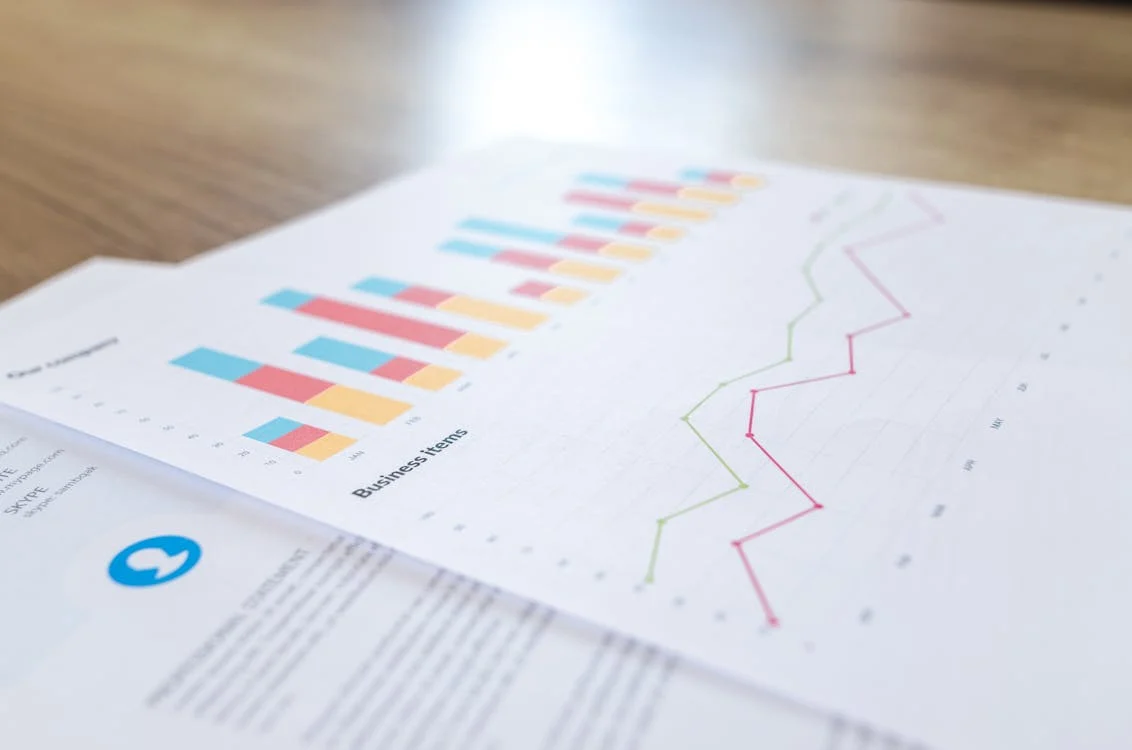TL;DR:
- Sustainable Growth Definition: Expanding with economic, environmental, and social considerations for long-term success.
- Key Characteristics: Balanced progress, long-term focus, ethical practices, resource efficiency, stakeholder engagement.
- Importance: Builds brand image, fosters stakeholder trust, adapts to market changes.
- Strategic Elements: Customer-centric growth, technology utilization, employee engagement, strategic partnerships, diversification, innovation.
- Examples: Unilever (carbon reduction), Tesla (electric vehicles), Patagonia (recycled materials), IKEA (sustainable sourcing).
- Challenges: Access to funding, technology resources, transparency, accountability, regulatory compliance.
- Future Trends: AI integration, post-COVID sustainability focus, government policy support, and rising consumer demand for sustainability.
Can businesses truly thrive focusing on long-term success over quick profits? “Sustainable growth in business” integrates economic advancement with environmental and social priorities. Companies that embrace this approach find a balance between profit and responsibility, ensuring steady progress while positively impacting society.
By understanding the meaning behind sustainable growth, businesses can inspire long-term success, supporting a future where profitability and ethics coexist. But what really sets apart sustainable businesses? Dive in as we explore how this approach not only benefits the world but also paves the way for enduring success.
Understanding Sustainable Growth in Business
Sustainable growth in business means expanding while considering economic, environmental, and social factors. It focuses on long-term success and making a positive impact rather than just quick profits. This involves creating processes that lead to steady progress over time.
Why is long-term viability important? It helps businesses stay relevant in a changing world. Companies focused on sustainable growth align with ethical standards and reduce their environmental impact. This builds a positive brand image and fosters trust with stakeholders.
Key characteristics of sustainable growth include:
- Balanced Progress: Integrating economic, environmental, and social factors.
- Long-Term Focus: Valuing lasting success over short-term gains.
- Ethical Practices: Following business ethics that respect societal values.
- Resource Efficiency: Minimizing waste by using resources wisely.
- Stakeholder Engagement: Involving stakeholders in decision-making for transparency.
Key Principles of Sustainable Business Practices

Businesses are incorporating sustainability into their operations for lasting success. This not only builds a strong brand reputation but also meets the demand for eco-friendly products and services.
Importance of Brand Identity
A strong brand identity connects emotionally with customers by consistently showing the company’s values and mission. This bond encourages loyalty and repeat business. Visual elements like logos make it easy for customers to recognize and relate to a brand, strengthening trust over time.
Role of Partnerships and Collaborations
Partnerships expand market access and resource sharing. By teaming up, businesses can access new markets, share resources, and enhance innovation. This collaboration reduces costs and opens opportunities for shared growth.
| Principle | Description |
|---|---|
| Ethical Integration | Combines ethical values with business strategies for societal benefit. |
| Resource Efficiency | Minimizes waste and optimizes resource use. |
| Stakeholder Inclusion | Engages stakeholders for transparency and accountability. |
| Long-Term Vision | Prefers sustainable growth over short-term gains. |
| Innovation and Adaptation | Encourages improvement and adaptability in a changing market. |
Strategies for Achieving Sustainable Growth
A clear strategy is crucial for sustainable growth. Without it, businesses might chase short-term profits instead of building a lasting foundation. To succeed sustainably, companies must integrate growth strategies with ecological and social responsibilities.
Customer-Centric Growth
Why keep customers? Keeping customers costs up to five times less than acquiring new ones. Loyal customers tend to make repeat purchases and recommend the business. Focusing on customer satisfaction creates stable revenue and builds trust.
Technology and Data Analytics
How does technology help decisions? Technology provides insights into consumer behavior, helping tailor strategies to customer needs. Data analytics help businesses predict trends, enabling informed decisions. This enhances customer experience and operational efficiency.
- Engage Employees: Foster productivity through a motivated workforce and strong company culture.
- Optimize Resource Management: Use resources efficiently to boost profitability.
- Develop a Strong Brand Identity: Connect emotionally with customers through a unique identity.
- Leverage Strategic Partnerships: Collaborate to enter new markets and share resources.
- Focus on Diversification: Explore new products or markets to decrease reliance on one revenue stream.
- Encourage Innovation: Create an environment responsive to market changes.
- Align Sales and Marketing: Ensure cohesive strategies for better lead quality and growth.
- Regularly Analyze Strategies: Adapt based on feedback to stay aligned with growth goals.
Real-World Examples of Sustainable Growth

Innovating for sustainability benefits companies through brand loyalty and efficiency. Aligning with societal expectations boosts reputation and long-term success.
Global Innovators
Which companies lead in global sustainability standards? Unilever and Tesla are key examples. These businesses align with international standards to ensure responsible operations. Unilever, for instance, reduces its carbon footprint, enhancing efficiency and trust. Tesla’s electric vehicles set a new industry standard, showcasing sustainable innovation.
Balancing Expansion and Responsibility
Patagonia and IKEA illustrate balancing growth with ethics. Patagonia uses recycled materials and supports conservation. IKEA focuses on sustainable sourcing and energy efficiency. These examples show ethics and growth can coexist, bolstering brand image.
| Company | Sustainability Practice | Impact |
|---|---|---|
| Unilever | Carbon footprint reduction in supply chain | Increased efficiency and consumer trust |
| Tesla | Production of electric vehicles | Leadership in sustainable innovation |
| Patagonia | Use of recycled materials and conservation support | Enhanced brand loyalty and ethical recognition |
Overcoming Challenges in Sustainable Growth
Financial and technological barriers challenge sustainable growth. Startups often struggle to find venture funding for scaling and sustainable practices. Technology support is necessary for innovation and efficiency, but many businesses lack resources for advanced solutions. These hurdles can slow progress toward sustainability.
- Access to Funding: Challenges in securing capital for sustainable projects.
- Technology Support: Limited resources for adopting advanced tech.
- Transparency: Need for clear reporting and openness.
- Accountability: Responsibility for societal and environmental impact.
- Regulatory Compliance: Adherence to laws governing sustainability.
To overcome these challenges, businesses should ethical practices and innovation. Transparent investor relationships can improve funding. Gradual tech investment enables advancement without strain. Accountability aligns operations with societal values. Complying with regulations enhances credibility.
Future Trends in Sustainable Business Growth
AI and digital technologies are changing business sustainability. They automate processes, increase efficiency, and reduce waste. Yet, the challenge lies in managing ethical issues and data privacy. Digital tools also help in global collaboration, essential for sustainable growth.
Post-COVID Shifts
Why the rise in sustainable practices post-pandemic? The pandemic exposed global supply chain vulnerabilities. Consequently, businesses now focus more on long-term sustainability. Policies like the Production Linked Incentive scheme encourage sustainable practices. This reflects a societal shift towards valuing responsibility.
- Policy Support: Governments incentivize sustainable practices with new policies.
- Digital Transformation: Technology automates operations, reducing ecological impact.
- Global Collaboration: Companies cooperate internationally to face sustainability challenges.
- Consumer Demand: Growing consumer preference for sustainable brands prompts adaptation.
Final Words
Bringing together economic progress with ethical choices, sustainable growth in business isn’t just a buzzword. It’s about lasting impact and steady, meaningful progress.
Understanding key principles like brand identity, strategic partnerships, and leveraging technology lays a solid foundation. Real-world examples show this isn’t just theory—it works.
Facing challenges head-on, like funding and transparency, is crucial. As technology evolves, so do opportunities for innovation and sustainability.
In the end, businesses committed to sustainable growth will thrive and make a positive difference. This approach promises not just growth, but a better business and a better world.
FAQ
What does sustainable business growth mean?
Sustainable business growth means integrating economic progress with environmental, societal, and ethical considerations. It’s about achieving long-term viability and creating a positive impact on society rather than focusing on short-term gains.
What is an example of sustainable growth?
An example of sustainable growth is a company reducing waste through recycling and using renewable energy sources, which can lead to cost savings and increased public goodwill.
What does sustainable growth rate mean in business?
The sustainable growth rate is the maximum rate at which a company can grow without needing to increase debt or equity, keeping its existing financial policies stable.
How to grow your business sustainably?
Growing your business sustainably involves developing processes that maintain steady progress, focusing on customer retention, leveraging technology, and engaging employees for higher productivity and satisfaction.
What are the benefits of sustainable growth in business?
Sustainable growth in business enhances brand reputation, builds customer loyalty, and improves operational efficiency. It aligns profitability with ethical practices, fostering long-term stability and positive societal impact.

